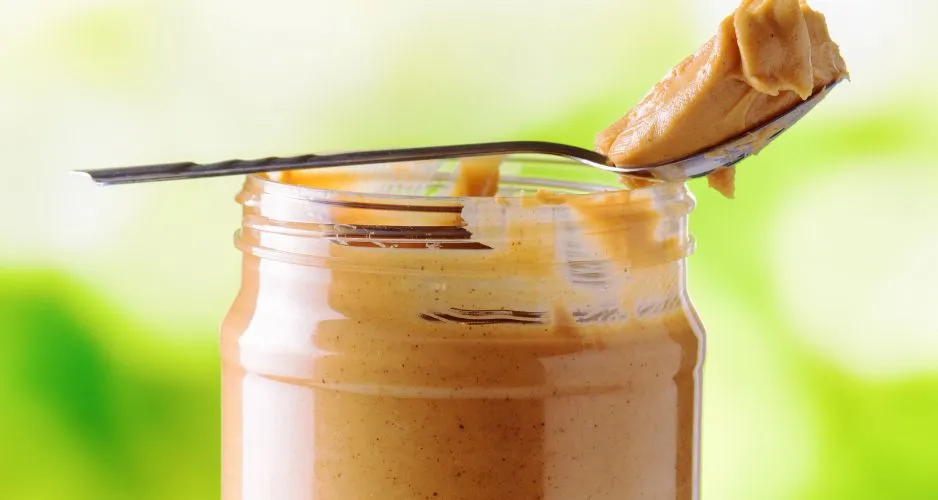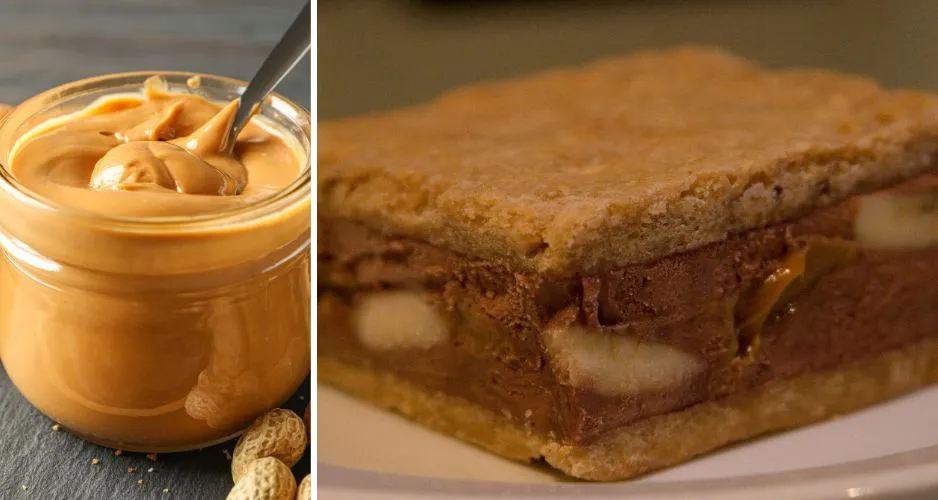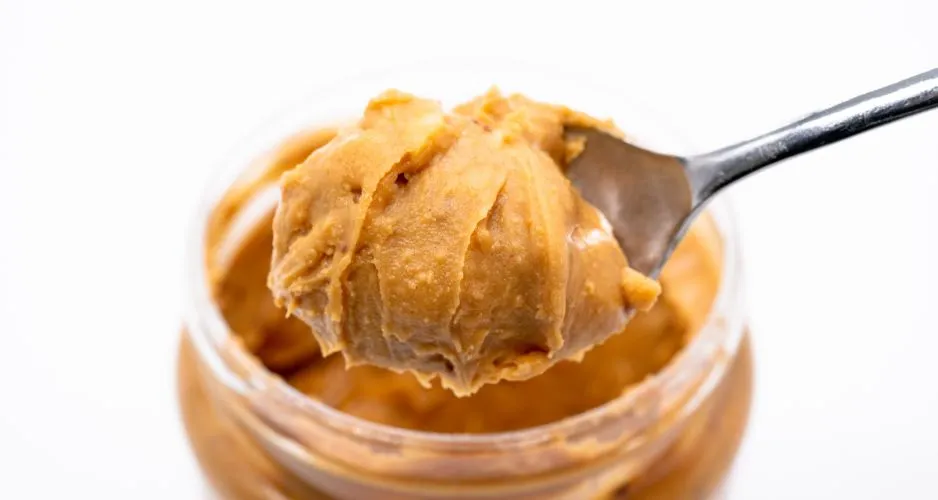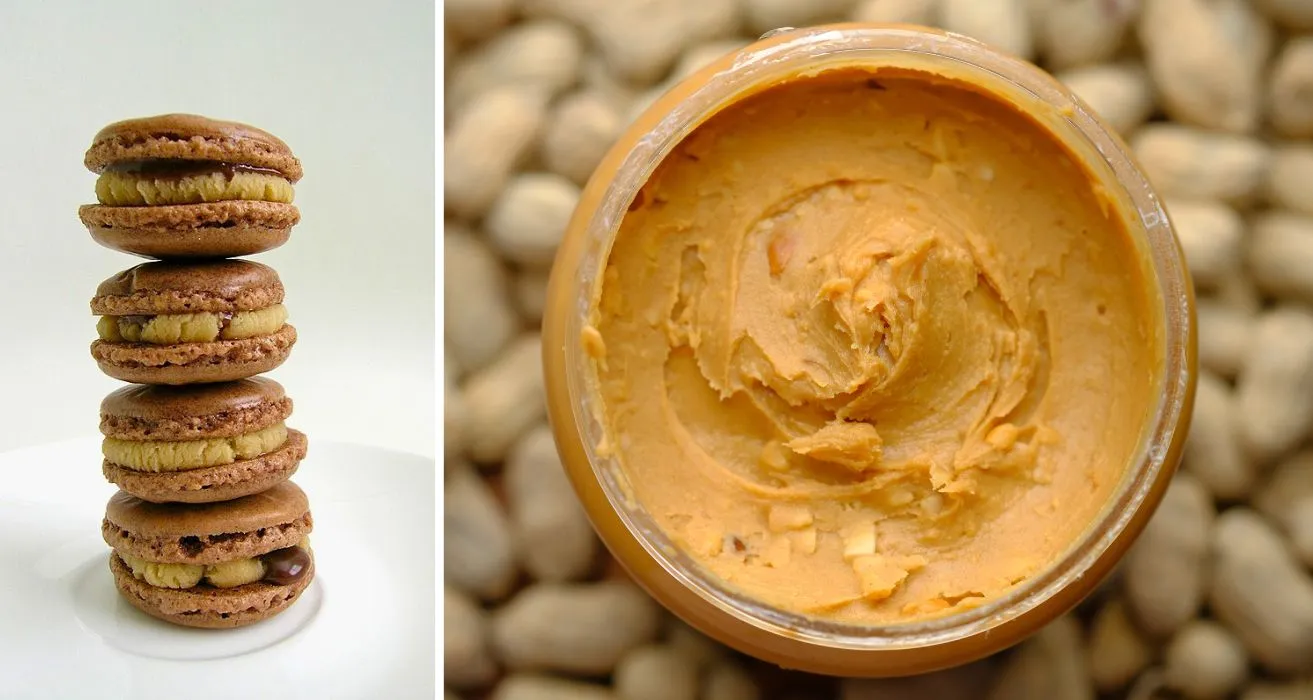Diving into the world of desserts, there’s a luscious treat that’s capturing hearts and taste buds alike: peanut butter ganache. This creamy, decadent delight stands out in the culinary cosmos, blending the rich, nutty essence of peanut butter with the smooth, velvety texture of ganache. Whether you’re a baking aficionado or a sweet tooth seeking your next indulgence, this article unfolds the secrets of peanut butter ganache. From its roots to its ravishing uses, storage tips, and beyond, get ready to embark on a gastronomic journey that promises to elevate your dessert game to celestial heights.
Introduction to Peanut Butter Ganache
Peanut butter ganache, a term that dances on the tongue as smoothly as the concoction itself, marries the robust, earthy flavors of peanut butter with the creamy luxury of traditional ganache. A favorite among dessert lovers, it’s versatile enough to grace everything from sophisticated macarons to homely cakes. But what exactly is it? Simply put, it’s a blend of peanut butter, heavy cream, and white chocolate, whipped into a smooth, spreadable form. Its popularity isn’t just a stroke of luck; it’s a testament to its irresistible taste and texture.
The journey of peanut butter ganache from a baker’s secret to a mainstream marvel is a tale as rich as its flavor. Initially, ganache was a simple mixture of chocolate and cream, used primarily in truffles and as a glaze. However, culinary innovators saw the potential for more. By incorporating peanut butter, they created a variant that not only adds a new dimension of flavor but also brings a comforting, familiar touch to desserts. This evolution reflects the ever-changing landscape of gastronomy, where tradition meets innovation to create something truly extraordinary.
Making Peanut Butter Ganache
The alchemy of creating peanut butter ganache lies in its simplicity and the quality of its components. Here’s how you can whip up this divine mixture, along with some clever tweaks for those with dietary preferences.
Ingredients and Substitutions
At its core, peanut butter ganache needs just three key ingredients:
- 175g white chocolate, finely chopped for easier melting
- 125g creamy peanut butter, for that smooth, rich taste
- 160g heavy cream, the secret to its silky texture
For those with dietary restrictions, worry not! Heavy cream can be swapped out for coconut cream for a dairy-free version. And if white chocolate isn’t your cup of tea or you’re keen on a vegan alternative, high-quality vegan white chocolate will do the trick. Always remember, the choice of peanut butter is crucial. Opt for a shelf-stable, creamy variety to ensure a smooth ganache. For a bit of crunch or texture, feel free to use chunky peanut butter, but be mindful of its use in your dessert.

Step-by-Step Guide
Creating peanut butter ganache is akin to crafting a piece of art. Here’s a step-by-step guide to achieving perfection:
- Place the white chocolate and peanut butter in a heat-proof bowl.
- Heat the heavy cream in a microwave or saucepan until it just begins to bubble. Pour it over the chocolate and peanut butter mixture.
- Let it sit for a couple of minutes, then stir with a spoon or an immersion blender until smooth.
- For a drizzle or drip, use while slightly warm. For a filling, cover with plastic wrap and chill until set, about 2 hours.
Tips for Perfect Ganache Every Time:
- Precision is key. Use a kitchen scale for accurate measurements.
- Quality matters. Opt for high-quality ingredients for the best taste and texture.
- Patience pays off. Allow the ganache to set properly to achieve the desired consistency.
Embracing these steps and tips will ensure your peanut butter ganache is nothing short of heavenly. Whether you’re filling macarons or drizzling it over a cake, this ganache is sure to elevate your dessert to a masterpiece. For further insights on creating perfect macarons to pair with your ganache, explore How to Make Macarons, a resource rich with baking wisdom.
Stay tuned for more delicious details in the following sections, where we’ll explore the myriad uses of peanut butter ganache, dive into customization and variations, and unveil expert storage and make-ahead tips.
Uses of Peanut Butter Ganache
The versatility of peanut butter ganache elevates desserts from simple to gourmet. Its creamy texture and rich flavor enhance sweets in many ways. Let’s dive into its uses, from fillings to drizzles, highlighting how it can star in your dessert creations.
As a Filling
Imagine a soft macaron or fluffy cupcake with a smooth, nutty heart of peanut butter ganache. Its thick consistency is perfect for fillings, offering a burst of flavor that complements any dessert. Whether between cookies or inside chocolates, ganache brings luxury that’s irresistible.
As a Drizzle or Drip
Peanut butter ganache can also add elegance as a drizzle or drip. Warm it slightly to pour over cakes, tarts, and ice cream, creating a stunning visual effect. This rich contrast not only boosts flavor but turns desserts into art.
Creative Applications
Ganache’s adaptability invites experimentation. Use it in chocolate truffles or mix it into buttercream for innovative frosting. The possibilities are vast, allowing for personalized treats that showcase its versatility.
By exploring peanut butter ganache’s uses, you unlock culinary creativity, giving desserts a unique, indulgent twist. Whether filling, drizzling, or inventing new treats, ganache adds depth and delight to baking.
Next, we’ll explore customization and variations of peanut butter ganache. Learn how to tweak flavors and textures, making every dessert a reflection of your culinary style. Stay tuned for tips to inspire and enhance your dessert-making skills
Customization and Variations
The journey into the heart of peanut butter ganache doesn’t stop at its basic recipe. The true magic unfolds when you start to play with flavors and textures, customizing it to fit the theme of your dessert or to cater to personal preferences. Let’s dive into the ways you can add your own twist to this versatile ganache.

Flavor Variations
The robust flavor of peanut butter ganache serves as a perfect canvas for additional taste profiles. Consider infusing it with vanilla extract for a subtle floral note, or add a pinch of sea salt to enhance its richness. For those who crave a bit of spice, a dash of cinnamon or chili powder can introduce a warm, intriguing complexity to the ganache. And for a festive touch, mix in some peppermint extract during the holiday season. These simple additions can transform the ganache, making it a versatile component in your culinary arsenal.
Texture Adjustments
While the silky-smooth texture of peanut butter ganache is often desired, there are times when a different consistency can better serve your dessert. If you’re aiming for a firmer set, perhaps for truffle centers or a more sculptable filling, consider reducing the amount of heavy cream. Conversely, to achieve a softer, more fluid ganache suitable for drizzling, a slight increase in cream will do the trick. Remember, the key to mastering texture lies in understanding the balance between the fat from the peanut butter and chocolate and the liquid from the cream.
Customizing your peanut butter ganache opens up a world of possibilities, allowing you to tailor its flavor and consistency to your exact needs. Whether you’re aiming for a subtle twist or a bold new variation, these adjustments ensure that your ganache will always be a reflection of your culinary creativity.
As we continue to explore the delightful versatility of peanut butter ganache, our next segment will guide you through the best practices for storing and preparing your ganache ahead of time. This knowledge is crucial for any baker looking to optimize their time without compromising on quality. Stay tuned for invaluable tips that will make your ganache experience as smooth and enjoyable as the dessert itself.
Storage and Make-Ahead Tips
In the world of baking and dessert making, efficiency and planning can be just as important as the flavors you create. Peanut butter ganache is not only versatile in its use but also in the ways it can be stored and prepared in advance. Let’s delve into how to keep your ganache deliciously ready for whenever inspiration strikes.
Short-term and Long-term Storage
Short-term Storage: If you’ve just whipped up a batch of ganache and plan to use it within a week, the refrigerator is your friend. Ensure your ganache is covered with plastic wrap, pressing it directly onto the surface to prevent a skin from forming. This method keeps it fresh and ready to use after a quick stir to bring it back to a smooth consistency.
Long-term Storage: For those who like to plan way ahead, freezing peanut butter ganache is a game-changer. Spoon your ganache into an airtight container or a zip-lock bag, squeezing out as much air as possible before sealing. When stored properly, it can last for up to a month. To use, simply thaw it overnight in the refrigerator, then let it come to room temperature before giving it a good stir.
Preparation in Advance
The beauty of peanut butter ganache lies in its forgiving nature when made ahead of time. Preparing your ganache in advance not only saves you precious time but can also enhance its flavor, giving the ingredients more time to meld together harmoniously. For the best results, allow your ganache to sit at room temperature for a bit after removing it from the fridge or freezer, ensuring it regains its ideal consistency for piping or spreading.
By following these storage and preparation tips, you can ensure your peanut butter ganache remains a reliable and delicious component of your dessert repertoire, ready at a moment’s notice to add that special touch to your creations.
As we wrap up our exploration of peanut butter ganache, our final piece will address the most common questions bakers have about this delightful concoction. Stay tuned for our FAQs section, where we’ll demystify ganache and help you achieve perfection every time you make it.
Common FAQs
As we’ve journeyed through the delightful world of peanut butter ganache, it’s natural to have questions about perfecting this versatile treat. In this section, we address some of the most common queries to help you navigate any uncertainties you may encounter. Let’s dive into the FAQs to ensure your ganache adventures are smooth and successful.
What are the three types of ganache?
There are three primary types of ganache, which vary based on their intended use: pouring, whipping, and spreading. Pouring ganache has a thin consistency, ideal for glazing cakes or pastries. Whipping ganache is cooled and whipped to a fluffy texture, perfect for fillings or as a light frosting. Spreading ganache is thick and sets firmly, used for truffles or as a dense filling.
What happens if you add butter to ganache?
Adding butter to ganache enhances its smoothness, richness, and flavor. Consequently, it also impacts the ganache’s firmness and glossiness, making it more luxurious and tender. This modification is especially beneficial for fillings and frostings, providing a silky texture and a more pronounced taste.
Is ganache better than frosting?
Whether ganache is better than frosting depends on personal preference and the specific application. Ganache offers a rich, chocolatey flavor with a smooth texture, while frostings can be lighter and available in a wider variety of flavors. Therefore, ganache might be superior for chocolate lovers seeking decadence, whereas frosting is versatile and customizable.
Does butter ganache taste good?
Butter ganache tastes exceptionally good, combining the rich, deep flavors of chocolate with the creamy, luxurious texture that butter adds. This combination results in a more refined taste profile, making it a favorite among those who appreciate a smoother, richer chocolate experience.
What 2 ingredients is a ganache made from?
Ganache is primarily made from two ingredients: chocolate and heavy cream. The ratio of these ingredients can vary depending on the desired consistency of the ganache, ranging from a pourable glaze to a thick frosting or filling.
Is ganache Italian or French?
Ganache is of French origin, tracing back to the 19th century. It is a staple in French patisserie, used widely in cakes, truffles, and other desserts. The term “ganache” itself reflects its French heritage, signifying a luxurious and rich chocolate mixture.
Is ganache better than buttercream?
Comparing ganache to buttercream is a matter of preference and application. Ganache is denser, with a rich chocolate flavor, making it ideal for those who prefer a more intense taste. Buttercream, however, is lighter and can be flavored in numerous ways, offering a versatility that ganache does not. For chocolate enthusiasts, ganache might be considered superior, but buttercream wins in adaptability and flavor diversity.

Does butter ganache set hard?
Butter ganache can set to a firm consistency, especially if a higher chocolate-to-butter ratio is used and it is allowed to cool properly. However, it typically remains softer than pure chocolate ganache due to the fat content in butter, which contributes to a softer set and a creamier texture.
Why do people put butter in ganache?
People add butter to ganache to enhance its creaminess, flavor, and shine. Butter introduces a richness that makes the ganache smoother and more luxurious. Additionally, it can improve the texture, making it more palatable for frosting and fillings.
Can I put ganache straight onto cake?
Yes, ganache can be applied directly onto a cake. For a glaze or drip effect, a thinner, pouring ganache is ideal. If used as a frosting or filling, allow the ganache to cool and thicken slightly for ease of spreading. This versatility makes ganache a popular choice for cake decoration.
Why is it called ganache?
People believe “ganache” comes from a French word meaning “jowl,” hinting at the mixture’s creamy and smooth texture. Another story tells of a culinary mishap where someone mixed cream and chocolate by accident, creating the beloved blend we enjoy today.
Is ganache made with butter or cream?
Traditionally, making ganache involves heavy cream and chocolate. While some might add butter for more richness and shine, it’s not essential. The heavy cream is key to the classic silky texture of ganache
What are some variations of a ganache?
Variations of ganache include white chocolate ganache, milk chocolate ganache, and dark chocolate ganache. Flavored ganaches can also be created by infusing the cream with ingredients such as herbs, spices, or liqueurs before mixing it with chocolate. These variations allow for a wide range of tastes and uses in desserts.
What is the basic formula for ganache?
The basic formula for ganache typically involves a 1:1 ratio of chocolate to heavy cream, measured by weight. Adjustments are made based on the desired consistency; for example, a 2:1 ratio of chocolate to cream for a firmer set, or a 1:2 ratio for a thinner glaze.
What are the different types of ganache fillings?
Ganache fillings can range from thick and truffle-like to light and whipped. Variations include chocolate ganache infused with flavors like vanilla, mint, or coffee, and ganaches made with different types of chocolate such as white, milk, or dark. These fillings are used in pastries, chocolates, and desserts for added depth and richness.
Is ganache a type of icing?
Yes, ganache can be considered a type of icing, especially when used to coat or decorate cakes and pastries. It provides a glossy, rich chocolate finish that is both visually appealing and delicious, differing from traditional icings in its composition and flavor profile.
Can I make peanut butter ganache without heavy cream?
Yes, you can substitute heavy cream with coconut cream for a dairy-free version. The key is to maintain the fat content for that silky texture, so avoid low-fat alternatives.
How can I fix separated or grainy ganache?
Separation usually occurs due to temperature shock or incompatible fat ratios. To rescue it, gently reheat the ganache over a double boiler, stirring slowly until it emulsifies again. Adding a tablespoon of warm cream can also help rebind the mixture.
Can peanut butter ganache be used under fondant?
Absolutely! Once set, peanut butter ganache provides a firm, smooth surface ideal for fondant application. Ensure the ganache is chilled and firm before covering.
How do I achieve a pourable ganache consistency for glazes?
For a thinner, pourable consistency, increase the ratio of cream to chocolate and peanut butter. This adjustment creates a fluid ganache perfect for glazing cakes or pastries.
Is it possible to flavor peanut butter ganache with other ingredients?
Yes, ganache is wonderfully adaptable to flavor additions. Experiment with extracts, spices, or liqueurs to introduce new dimensions to your ganache. Just be mindful of liquid additions, as they can affect the consistency.
Can I color peanut butter ganache?
While adding color to peanut butter ganache is possible, it’s best achieved with oil-based or powder food colors to avoid altering the texture. Remember, the natural color of the peanut butter will influence the final hue.
By addressing these common questions, we hope to enhance your confidence and creativity when working with peanut butter ganache. This sumptuous treat not only elevates desserts but also invites you to experiment and personalize your creations, making each experience in the kitchen a delightful discovery.
As we conclude our comprehensive exploration of peanut butter ganache, we invite you to embrace the tips, techniques, and ideas shared. Whether you’re a seasoned baker or a curious newcomer, the world of ganache offers endless possibilities to inspire and indulge. Happy baking!
Conclusion:
As we’ve navigated through the ins and outs of crafting, using, and perfecting peanut butter ganache, we’ve covered everything from basic preparation to advanced customization and storage techniques. This comprehensive guide aimed to equip you with the knowledge and confidence to incorporate this versatile and delectable ingredient into your baking repertoire. However, it’s essential to remember that the art of baking is as much about creativity and experimentation as it is about precision and technique.
Embrace Experimentation and Creativity
The journey through understanding and utilizing peanut butter ganache doesn’t end here. The real adventure begins in your kitchen, where you have the freedom to experiment with flavors, textures, and applications. Each attempt offers a unique opportunity to learn and refine your skills. Don’t be afraid to try new combinations or to tweak the recipes to suit your taste preferences or dietary needs. Remember, every great baker started with a willingness to try, fail, and try again.
Seek Inspiration and Continue Learning
The world of baking is vast and ever-evolving. Indeed, there are countless resources available for those eager to expand their knowledge and skills. For instance, books, online tutorials, and baking courses can provide valuable insights and inspiration. Furthermore, engaging with the baking community, whether through social media, forums, or local classes, can also offer support, motivation, and new ideas. Therefore, never stop seeking inspiration and learning from others—after all, baking is a journey best shared.
Share Your Creations and Experiences
One of the joys of baking is sharing your creations with others. Whether it’s a simple batch of cupcakes for a family gathering or an elaborate dessert for a special occasion, each treat you make with love is a gift to those who enjoy it. Moreover, sharing not only brings joy to others but also allows you to receive feedback, which is invaluable for growth and improvement. In addition, consider documenting your baking adventures through photos or a blog, capturing the successes, the learning moments, and everything in between.
Final Thoughts
As we conclude this guide on peanut butter ganache, let’s remember that the essence of baking lies in the joy it brings—both in the making and the sharing. Whether you’re drizzling ganache over a dessert, filling chocolates, or experimenting with new flavor combinations, each creation is a testament to your dedication and creativity. So, go ahead, preheat your oven, gather your ingredients, and embark on your next baking adventure with confidence and a spirit of exploration.
Happy baking, and may your desserts always be as rich and fulfilling as the journey you take to create them.
